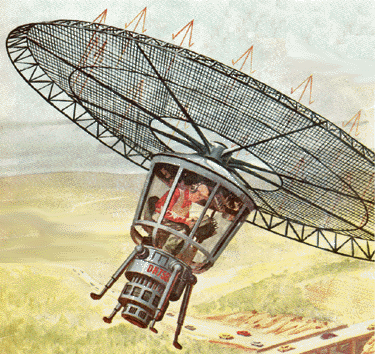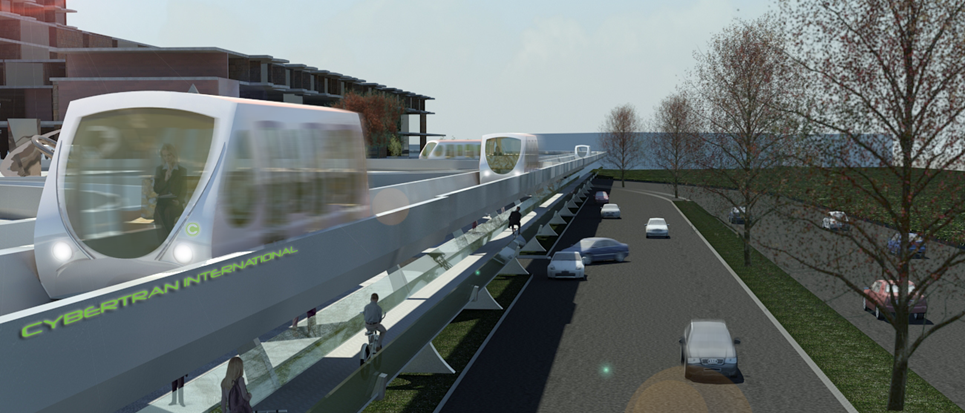Researching Future Transportation
Exploring potential technologies to serve as brand-new modes of transportation

photo credits, unspash, Lyncean Group
There are questions that science hasn’t asked. One of the biggest questions is in the field of transportation: it’s a statement. With all the technology changes over the past 100 years, there have been no new modes of transportation.
Rational for a brand-new mode of transportation
In Western Society, the automobile is the primary source of transportation. The society’s technological demands for short distance transportation have outgrown Western Society’s dependence on the automobile. The natural question to ask is: what can replace the car? Replacing the automobile as the primary source of transportation requires a transportation mechanism that’s more convenient for door-to-door service, faster, less expensive, more comfortable, safer, and easier to drive than a car. What technology can accomplish this? It doesn’t exist yet. There’s currently no vehicle technology available to satisfy these parameters, and worse: very little research to replace the car.
Replacing the car
What’s necessary to meet these qualifications? Answering that question requires a deep look at all of today’s modes of transportation. They all use propulsion. The relentless pursuit of propulsion technology as the only method for transportation motion, completely ignores the basic physics of what magnets do. Magnets repel and attract. How much energy does a magnet require to attract an opposite magnetic pole? This proposes the contemplation for using attraction as a possible means to compliment or replace propulsion. It also provides consideration for gravity as an attraction method, for transportation motion.
Changes to the future, require actions that alter things we do today. Changing tomorrow’s transportation can only be attained by searching to find alternatives for transportation motion. Stepping into the future and looking at its methods for transportation: it floats. This leads to an imperative necessity for research gravity and its manipulation to control.
Levitation for transportation
Is there a way that levitation can be used for a vehicle to float freely in the air? There are several previous articles about possibilities in considering levitation for transportation.
Here are two new questions. What is the path of an ion? How, or can that path be used to serve as a wave to ‘surf’ paths of ion streams with levitation?
In asking those two questions, is there a related possibility for using atmospheric ions to create a brand-new mode of transportation with levitation? By the resonance of controlled vibration, it is theoretically plausible for levitation to be used as a transportation mechanism. Several of the CATTCC articles examine the possibilities for using levitation as a transportation mechanism. Leading research in this field was Viktor Grebennikov and his discovery of Cavity Structures Effects (CSE). This provides exploratory possibilities to examine. In another article, levitation is identified as the vibration of mass accumulation.
One of the aspects to examine with Viktor Grebennikov’s work with CSEs, asks the question: does the configuration of bug wings within a cavities structure provide a perpetuating increase to its resonance? Does the shape of bug wing’s aerodynamic shape provide lift? And does the multitude of bug wings amplify resonance?
In the questions regarding possible paths of atmospheric ion flow, is there a quantitative amount of ionization in the air with a source of amplification to stimulate an electric charge that could enable a method levitating vehicle motion? In the article, Build with Levitation, there is a famous photo of Nicola Tesla sitting in his shop. The photo illustrates the amount of available electric potential. Nature has an abundance of available energy.
The article, Using Air for Levitation, has a link to a Richard Feynman lecture: Electricity in the Atmosphere. In the lecture, he describes the variances between the positively charged atmospheric ions and the negatively charge ions on Earth’s surface. Modern technology is capable to measure these variances and look for stream flows. Or, possibly create a mechanism to capture or create ionic streams.
In the search for answers, let’s ask the same question about ion streams that was asked about gravity (A Study in Gravity). Since we know ions are an action in atomic structure, it can be assumed ionization is similar to the combination in molecular structure of magnetic action. However, this stream action of ionization differs from magnetic action. It is static charge and flows as flash electric discharge. This energy release is seen as outward centrifugal frequency flow. It is a molecular action as the outward motion of particle collisions. Nature is very structured; it is an incredibly balanced motion. The flow of flash electric static discharge is non-random. An additional assumption is that a tiny fraction of such action should be sufficient to provide motion for levitating a vehicle device.
This raises another question: is that static ionization electric action a method for propulsion or is a portion of that potential applicable for levitation, or both? Seems the key word here to investigate is frequency; a pattern to that centrifugal motion. Since the known pattern of nature is the centripetal flow, seen as an exponential spiral of Fibonacci Sequence observed in sea shell shapes, a centrifugal movement has an opposite motion than nature’s pattern of centripetal flow. The frequency tone of that energy charge action is a clattering hiss sound. The pattern jumps around, seen in a far-away aerial view, like a creek bed.
According to Einstein’s energy equation, energy is light speed (C) squared of the constant: mass times C. This suggests that the frequency pattern of static charge discharge could be the same centripetal pattern of nature, however its pace is C squared. Our perspective in too slow to recognize its frequency flow pattern as it moves at C squared; interacting within the path of its molecular action.
Does this also explain the chemical action of energy in flickering flame as a Fibonacci Sequence?
Which gives rise to another question: how does heat affect a CSE? Does that stimulate vibration and amplify levitation propensity or potential? Or, is levitation merely a reaction of air movement in acoustics as frequency change? Magnets reveal that its levitating action is not related to acoustic frequency changes but, a molecular action of specific elements in close proximity to each other. These questions lead to a conclusion that levitation has multiple variations.
Ion drive
What are current technologies pursuing levitation for transportation? Maglev trains are one example. Another example is ion-drive technology being used as for deep space propulsion.
Undefined Technologies is a company pursuing short-distance levitation transportation. Their project, Silent Ventus, is a new concept in ion drive drone technology, based on T. Townsend Brown’s discovery of asymmetrical electrodes and the Biefeld-Brown Effect. The process ionizes air molecules by using a high-voltage electric fields to create an "ionic wind" that propels the drone forward. It uses this ionic propulsion instead of traditional propellers to generate lift and thrust.
Although Silent Ventus is still in development, their 2022 prototype demonstrated remarkable potential. Silent Ventus is a step into advanced transportation technology.
Other low speed aeronautics with potential for space flight of ion drive technology was performed by MIT. This commercialized nine and a half minute youtube video explains.
Another article highlights the work from the Lyncean Group regarding the 1964 patent of the Ionocraft.
Conclusion
The future of transportation floats. There are several areas open to research in finding ways to enable a vehicle to float in the air. Conversely, the current research methodologies in transportation focus on propulsion, causing answers about levitation and the attractive source of gravity, much more difficult to discover.



